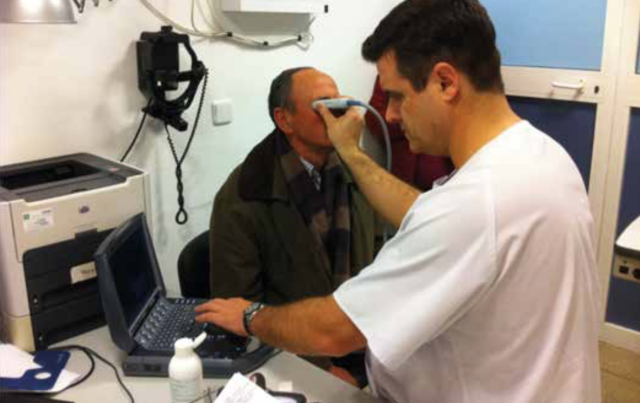
Point-of-care (POC) ultrasound is playing an increasing role in emergency medicine, providing the tools to help physicians rapidly and efficiently assess a wide range of patients. Dr Alberto Ángel Oviedo García, an emergency medicine specialist at the Hospital de Valme in Seville, has been instrumental in developing the use of POC ultrasound in Andalusia, providing focused training for emergency doctors across the region. He discusses the benefits of robust and highly portable ultrasound systems in an acute setting, together with the Aldalusia Health Service's Initiatives to increase its use.
I first became aware of the usefulness of ultrasound for emergency medicine around eight or nine years ago, particularly for dealing with unstable patients. Since then I have developed my skills through a number of training courses and qualifications nationally and internationally, and it has become an essential tool in my day-to-day practice. I use it at the beginning of the exam – rather than for specific diagnostic applications – and it saves a great deal of time, which can mean saving lives.
For example, if a patient reaches the hospital in cardiorespiratory arrest, I can rule out if a patient has a pulmonary thromboembolism in 30-40 seconds, while resuscitation is still being performed. This allows us to determine the best course of action immediately, rather than making our initial decisions blindly and confirming later if we were right or wrong. I have also been called upon by other departments to perform ultrasound scans. For instance, there was a child with major congenital problems who was admitted for intravenous antibiotic treatment, who the team was struggling to catheterise. With ultrasound, I was able to insert a line straight away, which was less distressing for the patient and much appreciated by his parents.
When looking to buy my own ultrasound system, I wanted an instrument at reflected this multi-purpose approach, as well as being robust enough to withstand the sometimes chaotic A&E environment. I looked at all of the portable instruments on the market at the time, and FUJIFILM Sonosite’s M-Turbo was perfect for my needs, combining ease-of-use with the flexibility to perform a wide variety of scans.
It has worked faultlessly ever since, and has undoubtedly helped me to develop my practice. The instrument’s image and video capture features have also been very useful for both research papers and training.
Although I haven’t had to call on FUJIFILM Sonosite’s support for my own ultrasound system, the company has been extremely supportive of our educational and training efforts here in Andalusia. Together with IAVANTE – a public company at provides training for the Andalusian Health Service – we have developed a range of courses in POC ultrasound, from a very basic introduction to the technique, to specialist courses in musculoskeletal, vascular and abdominal scanning, as well as ultrasound-guided techniques. The jewel in our crown is a three day course in ultrasound scanning for critical patients. Although intended for emergency medicine, is course is attended by GPs, internal medicine specialists, anaesthetists, and intensive care doctors, and is accredited by the Andalusian Health Quality Agency.
We are very lucky to have Sonosite providing almost unconditional support for our courses, supplying a wide range of instruments, including M-Turbo, Edge II and X-Porte systems. The X-Porte, in particular, is excellent for training. It offers the highest image quality, and has a large screen at makes it very easy for three or four people to observe while you are scanning. We have also been lucky enough to have the recently launched iViz, which I believe will be the future of dealing with critical patients in both a pre-hospital and hospital setting. Its easy-to-handle tablet format is very convenient for an emergency setting, and it uses the same sort of touchscreen technology now common to our everyday lives. This technology will make it even easier to perform clinical examinations – such as heart, lung and abdominal ultrasounds – and will lend itself to ultrasound-guided techniques in future. This will transform the way we manage many patients, helping to improve outcomes and increase patient satisfaction, and that’s what keeps you going as an emergency doctor.

